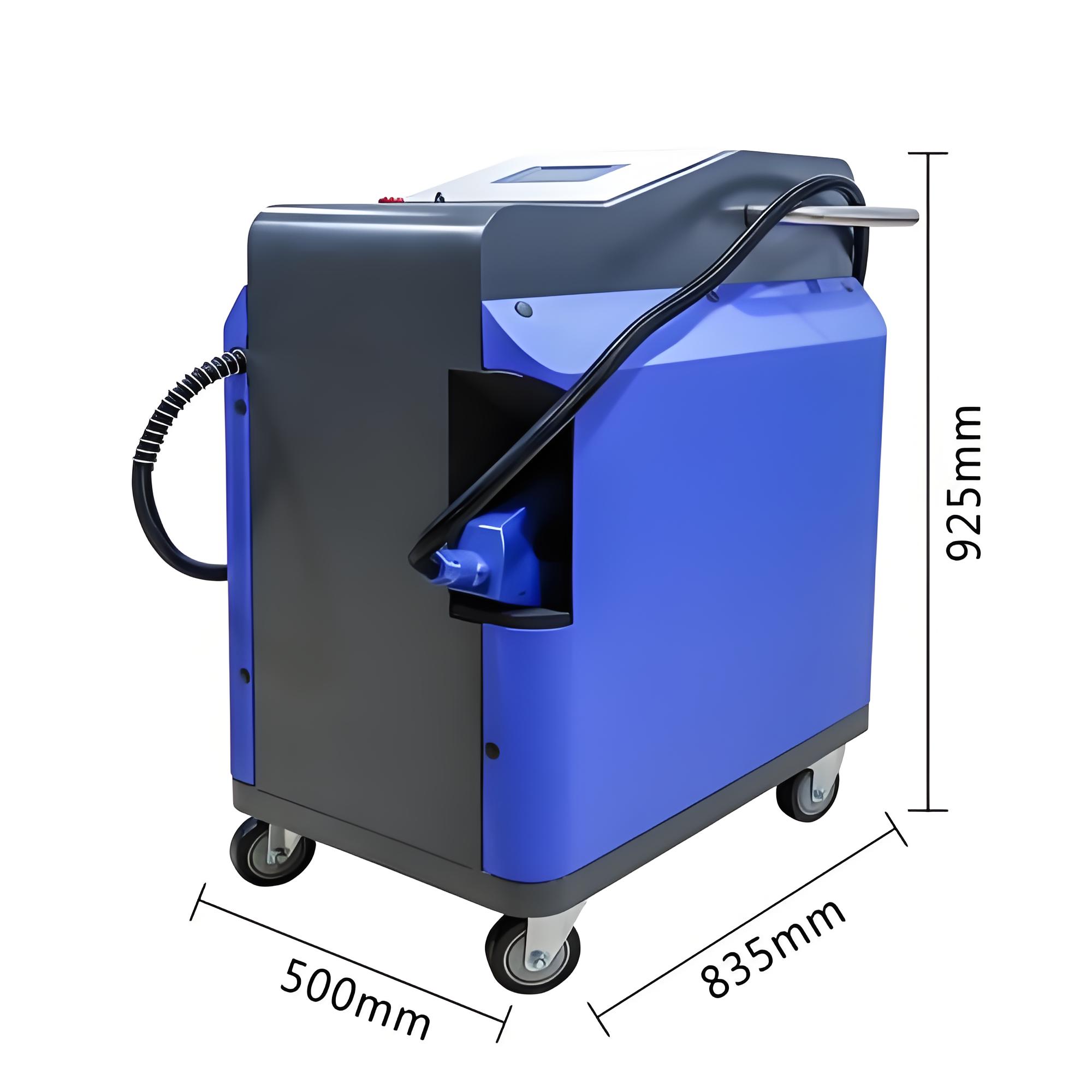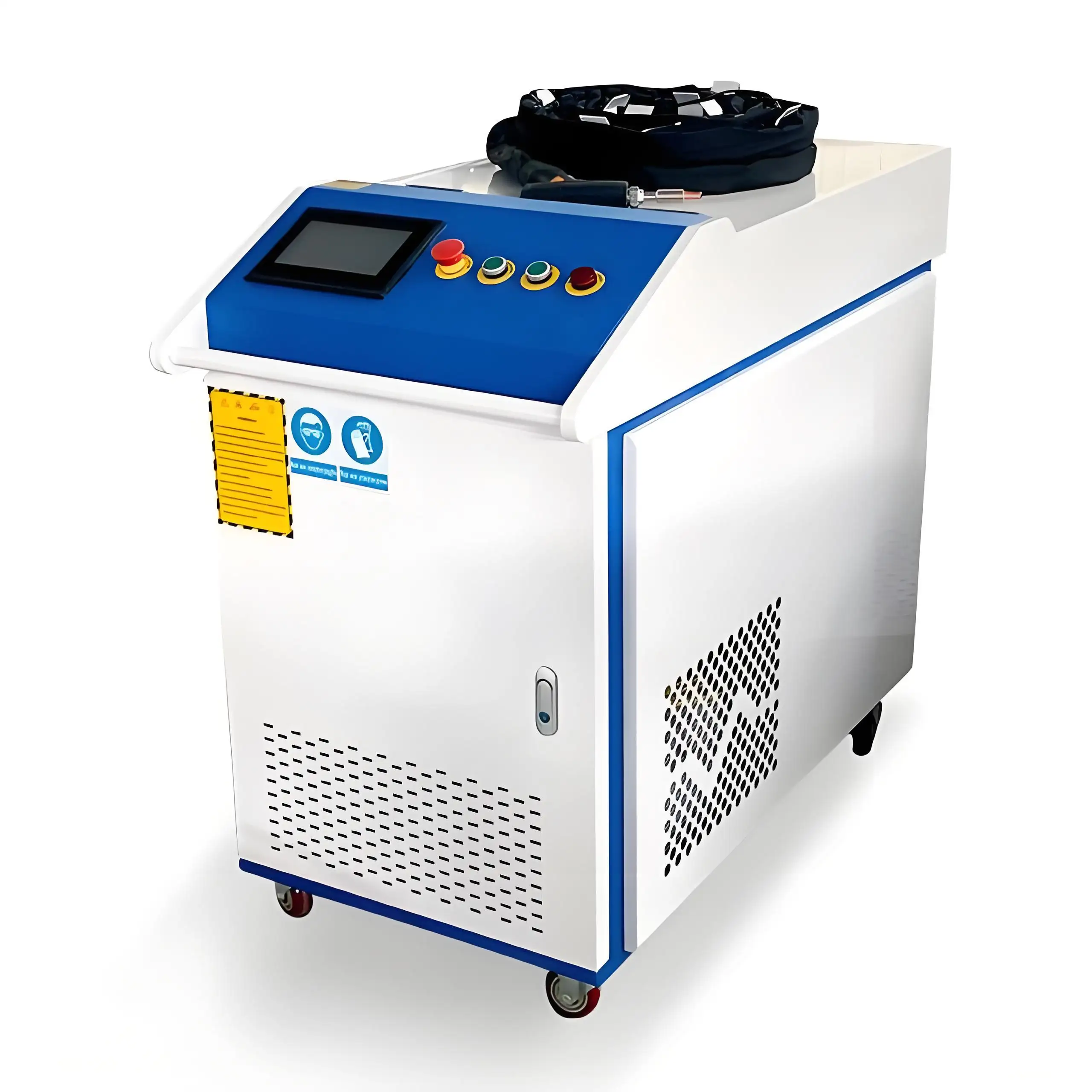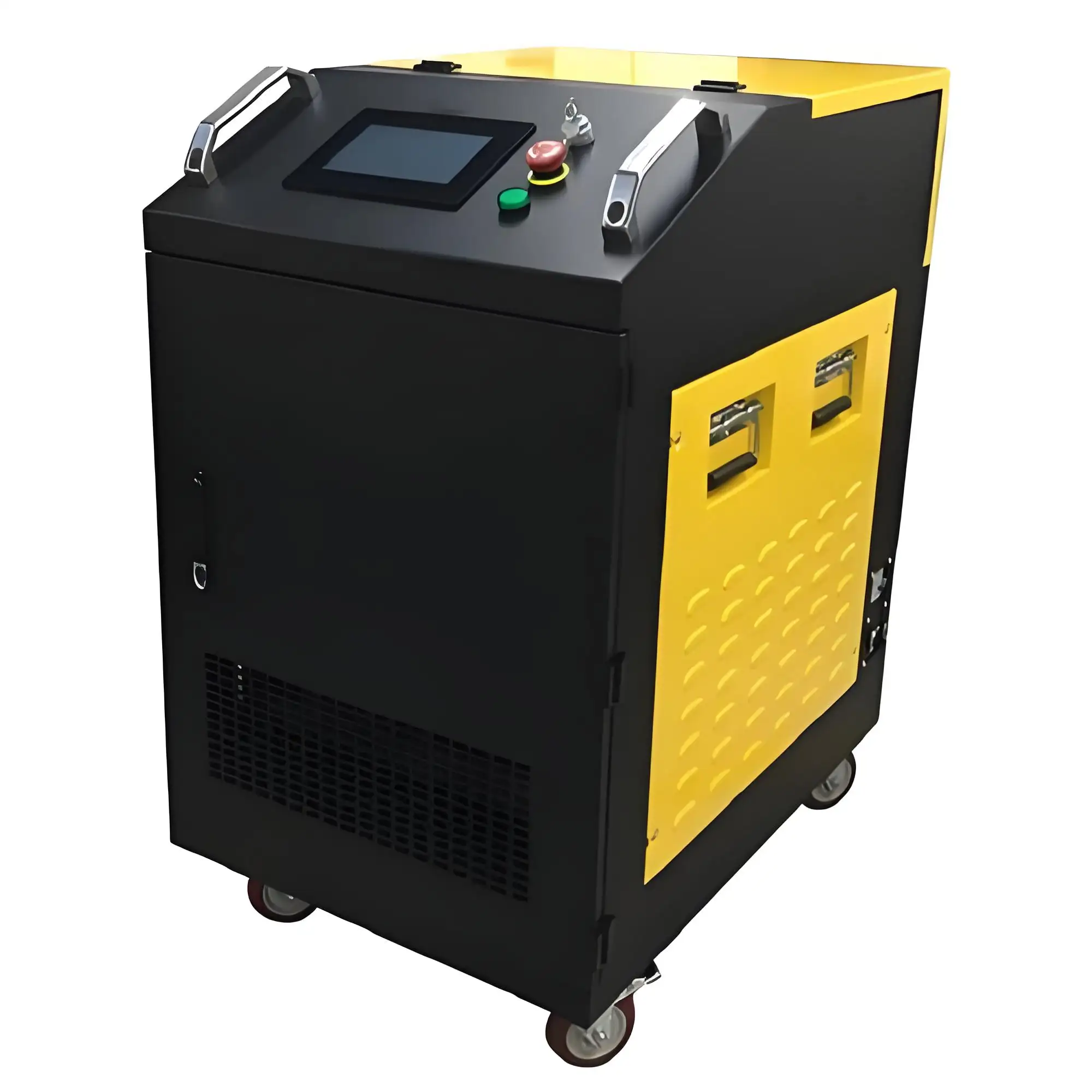In the realm of surface preparation and maintenance, laser rust removal has emerged as a revolutionary technology. It offers a non-contact, efficient, and environmentally friendly alternative to traditional methods like sandblasting or chemical stripping. However, as with any new technology, there are often questions and concerns, and one of the most common ones I’ve encountered is: Does laser rust removal generate dust?
As someone who has been in the industry for years, working with various surface treatment technologies and optimizing them for different applications, I’ve had the opportunity to closely observe and analyze the effects of laser rust removal. In this article, I’ll share my insights and experiences to help you understand whether laser rust removal generates dust and what you can expect from this process.

Understanding Laser Rust Removal
Before diving into the dust generation aspect, let’s first understand how laser rust removal works. Laser rust removal, also known as laser cleaning, uses a high-energy laser beam to irradiate the surface of a material. The laser energy is absorbed by the rust, paint, or other contaminants on the surface, causing them to rapidly heat up, vaporize, or sublimate. This process effectively removes the unwanted layer without damaging the underlying substrate.
One of the key advantages of laser rust removal is its precision. The laser beam can be focused to a very small spot size, allowing for targeted cleaning of specific areas. Additionally, the process is highly controllable, with parameters such as laser power, pulse duration, and repetition rate adjustable to suit different materials and cleaning requirements.
Does Laser Rust Removal Generate Dust?
Now, let’s address the main question: Does laser rust removal generate dust? The short answer is yes, but to a much lesser extent compared to traditional methods. Here’s why:
1. Vaporization and Sublimation
As mentioned earlier, laser rust removal works by vaporizing or sublimating the contaminants on the surface. Instead of physically breaking them apart into small particles like sandblasting does, the laser energy causes the contaminants to change their state from solid to gas. This means that instead of generating dust, the process produces a plume of vapor, which can be easily captured and filtered.
2. Minimal Physical Impact
Unlike mechanical methods that involve abrasive particles impacting the surface, laser rust removal is a non-contact process. There is no physical force applied to the surface, which significantly reduces the likelihood of generating dust. The laser beam simply interacts with the contaminants, causing them to detach from the surface without creating any debris.
3. Efficient Capture and Filtration Systems
Modern laser rust removal machines are equipped with advanced capture and filtration systems. These systems are designed to efficiently collect the vapor plume produced during the cleaning process and filter out any remaining particles. The filtered air can then be safely released back into the environment, minimizing the risk of dust pollution.
Factors Affecting Dust Generation in Laser Rust Removal
While laser rust removal generally generates less dust compared to traditional methods, there are still several factors that can influence the amount of dust produced:
1. Laser Parameters
The laser power, pulse duration, and repetition rate can all affect the cleaning process and, consequently, the amount of dust generated. Higher laser power and shorter pulse durations can lead to more efficient vaporization, reducing the amount of dust. However, these parameters need to be carefully adjusted to avoid damaging the underlying substrate.

2. Material Type and Condition
The type of material being cleaned and its condition can also influence dust generation. For example, materials with a high rust content or those that have been previously coated with multiple layers of paint may produce more vapor and, consequently, more dust during the cleaning process. Additionally, the thickness and adhesion of the contaminants can affect how easily they are removed and how much dust is generated.
3. Cleaning Environment
The cleaning environment, including factors such as temperature, humidity, and airflow, can also play a role in dust generation. A well-ventilated area with proper air filtration systems can help minimize the risk of dust accumulation and ensure a safer working environment.
Table: Comparison of Dust Generation in Laser Rust Removal vs. Traditional Methods
| Method | Dust Generation Level | Environmental Impact | Safety Concerns |
|---|---|---|---|
| Laser Rust Removal | Low | Minimal (Vapor plume captured and filtered) | Low (Non-contact process, reduced risk of inhalation) |
| Sandblasting | High | Significant (Abrasive particles dispersed into the air) | High (Risk of inhalation, eye and skin irritation) |
| Chemical Stripping | Moderate to High (Depends on chemical used and disposal method) | Moderate to High (Chemical fumes and waste disposal issues) | Moderate (Risk of chemical exposure, skin and eye irritation) |
Best Practices for Minimizing Dust in Laser Rust Removal
To further minimize dust generation during laser rust removal, here are some best practices you can follow:
1. Optimize Laser Parameters
Work with your laser rust removal machine supplier or a qualified technician to optimize the laser parameters for your specific application. This will ensure efficient cleaning while minimizing dust generation.
2. Use Proper Capture and Filtration Systems
Invest in a high-quality laser rust removal machine with advanced capture and filtration systems. Regularly maintain and clean these systems to ensure they are operating at peak efficiency.

3. Work in a Well-Ventilated Area
If possible, perform laser rust removal in a well-ventilated area with proper airflow. This will help disperse any remaining vapor and reduce the risk of dust accumulation.
4. Wear Personal Protective Equipment (PPE)
Even though laser rust removal generates less dust compared to traditional methods, it’s still important to wear appropriate PPE, such as safety goggles, gloves, and a respirator, to protect yourself from any potential hazards.
5. Regularly Clean the Work Area
After completing the laser rust removal process, regularly clean the work area to remove any remaining dust or debris. This will help maintain a clean and safe working environment.
Real-World Examples and Case Studies
To further illustrate the effectiveness of laser rust removal in minimizing dust generation, let’s look at some real-world examples and case studies:
Case Study 1: Automotive Industry
A major automotive manufacturer was looking for an alternative to sandblasting for removing rust from car parts. They decided to try laser rust removal and were impressed with the results. Not only did the laser process generate significantly less dust, but it also provided a more precise and consistent cleaning effect. The manufacturer was able to improve the quality of their car parts while reducing the risk of dust-related health hazards for their workers.
Case Study 2: Aerospace Industry
In the aerospace industry, precision and cleanliness are of utmost importance. A company specializing in aircraft maintenance was struggling with dust generation during traditional rust removal processes. They adopted laser rust removal and found that it not only minimized dust but also allowed them to clean delicate aircraft components without causing any damage. This improved the efficiency of their maintenance operations and enhanced the safety of their aircraft.
Conclusion
In conclusion, laser rust removal does generate dust, but to a much lesser extent compared to traditional methods like sandblasting or chemical stripping. The process works by vaporizing or sublimating the contaminants on the surface, producing a plume of vapor that can be easily captured and filtered. By optimizing laser parameters, using proper capture and filtration systems, working in a well-ventilated area, wearing PPE, and regularly cleaning the work area, you can further minimize dust generation during laser rust removal.
As the technology continues to evolve, we can expect even more improvements in dust reduction and overall efficiency. Laser rust removal offers a promising solution for industries looking to improve their surface preparation processes while minimizing environmental impact and ensuring worker safety.

Related Questions
Q1: Is laser rust removal safe for the environment?
A1: Yes, laser rust removal is generally considered safe for the environment. It produces minimal waste and does not involve the use of harmful chemicals. Additionally, the vapor plume produced during the process can be captured and filtered, reducing the risk of air pollution.
Q2: Can laser rust removal be used on all types of materials?
A2: Laser rust removal can be used on a wide range of materials, including metals, plastics, and composites. However, the specific laser parameters and cleaning techniques may need to be adjusted depending on the material type and condition. It’s always best to consult with a qualified technician or your laser rust removal machine supplier to determine the optimal settings for your application.
Q3: How does the cost of laser rust removal compare to traditional methods?
A3: The initial investment in a laser rust removal machine may be higher compared to traditional methods like sandblasting or chemical stripping. However, when considering factors such as reduced labor costs, improved efficiency, and minimized environmental impact, laser rust removal can often provide a better return on investment in the long run.
Q4: Can laser rust removal remove paint as well as rust?
A4: Yes, laser rust removal can effectively remove paint as well as rust. The laser energy can be adjusted to target different types of contaminants, allowing for versatile cleaning applications. Whether you need to remove rust, paint, or other coatings, laser rust removal can provide a precise and efficient solution.
Q5: Are there any limitations to laser rust removal?
A5: While laser rust removal offers many advantages, there are some limitations to consider. For example, it may not be suitable for cleaning very large surfaces or areas with complex geometries. Additionally, the process can be affected by factors such as material reflectivity and surface roughness. It’s important to carefully evaluate your specific cleaning requirements and consult with experts to determine if laser rust removal is the right choice for your application.






